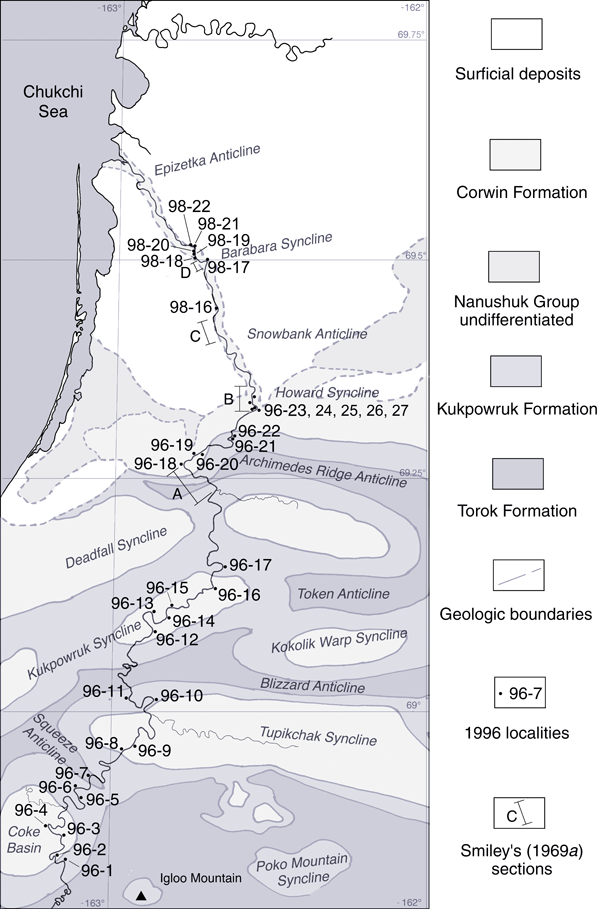Locality 96-4: 68° 50' 57" N 163° 11' 48" W
Corwin Formation
Description. Alternating coals, carbonaceous shales, siltstones and fine sands were exposed in large bluffs. Two prominant yellow/gray fine sandstones occur near the top of the exposure. Podozamites was found in all lithologies but was sparse in fine sands where Ginkgo predominated. Ginkgo was rare in other lithologies. Pityophyllum ex gr. nordenskiodii and P. ex gr. staratschinii were most frequent in coaly units, while abundant large-leaved Podozamites often occurred as a monodominant taxon in bright yellow- or orange-weathering ironstone nodules in carbonaceous shales. Equisetites, Birisia alata, Podozamites and Ginkgo ex. gr. adiantoides were found in the more sandy sediments. Coals up to 1 m thick were sub-bituminous. Throughout the section were found abundant logs up to 0.5 m diameter compressed parallel to their long axis. Some, however were almost circular indicating early mineralization. Calcite and iron minerals permeated all the wood, but the growth of calcite crystals have enlarged the tracheids and destroyed the structure.
Interpretation: This locality probably represents the youngest rocks exposed along the river in the Coke Basin syncline. Predominantly interfluve heavily vegetated, wooded floodplain environments including mires, subsequently inundated by near channel river sediments. There appears to be a a facies related heterogeneity in species distribution with Pityophyllum producers dominating the stable mires, Podozamites producers in slightly more clastic influenced swamps, and Ginkgo associated with the near channel disturbed sites.
|
|

